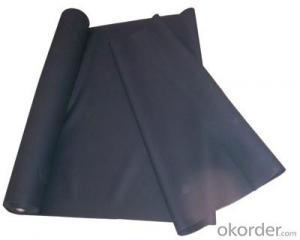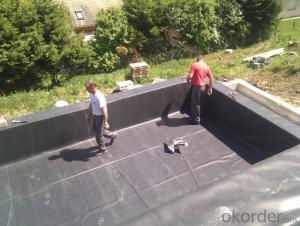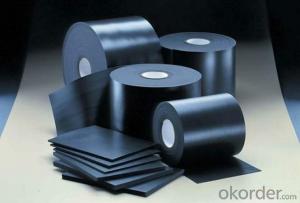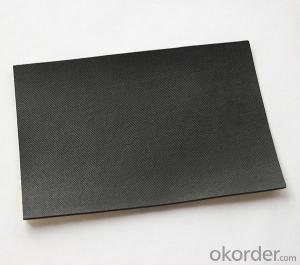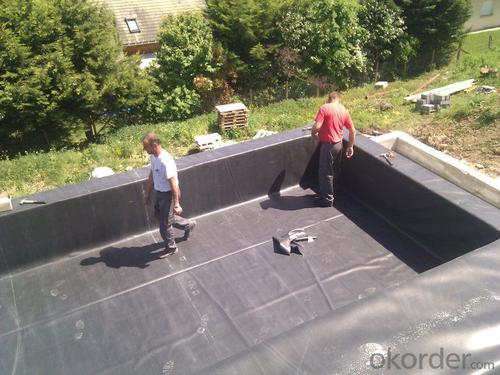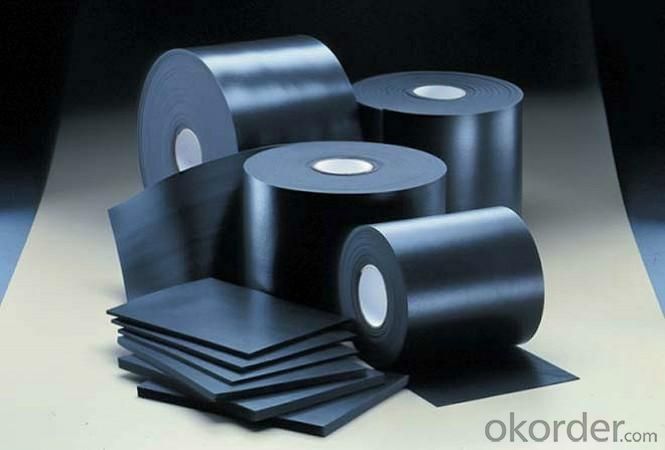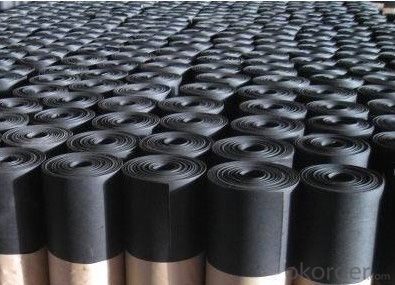EPDM Waterproof Roofing Membrane for Green Roof
- Loading Port:
- Shanghai
- Payment Terms:
- TT OR LC
- Min Order Qty:
- 20000 m²
- Supply Capability:
- 5000000 m²/month
OKorder Service Pledge
OKorder Financial Service
You Might Also Like
EPDM Waterproof Roofing Membrane for Green Roof
Description Of EPDM Waterproof Roofing Membrane for Green Roof:
1. EPDM waterproof membrane is made from ternary ethylene-propylene rubber, which is for waterproofing of exposed and non-exposed applications.
2. EPDM waterproof membrane production adopts the world-advanced equipment of cold feeding extrusion and continuous vulcanization technology.
3. EPDM waterproof membrane is of high elasticity among high polymer waterproof materials and becomes a world-popular waterproofing material.
Main Features of EPDM Waterproof Roofing Membrane for Green Roof:
1. Excellent physical and mechanical performance
2. High tearing resistance
3. Good deformation adaptability
4. High puncture resistance
5. High aging resistance
6. UV resistance
Specifications of EPDM Waterproof Roofing Membrane for Green Roof:
| Material | EPDM Rubber |
| Size | 1.2m (width)*20m (length) or customized, weldable type 2.05m or 4m width |
| Thick | 1.2mm, 1.5mm, 2.0mm |
| Type | Vulcanized & Weldable |
| Pattern | Non-reinforced (homogeneous) |
| Certificate | ISO9001/14001 |
Applications of EPDM Waterproof Roofing Membrane for Green Roof:
1.Roofs, Basement, Toilets
2. Industrial and civil building waterproofing
3. Geosynthetic liner for swimming pool, channels, irrigation system
4. Especially suitable for projects with high requirements in durability, anti-corrosion and deformation.
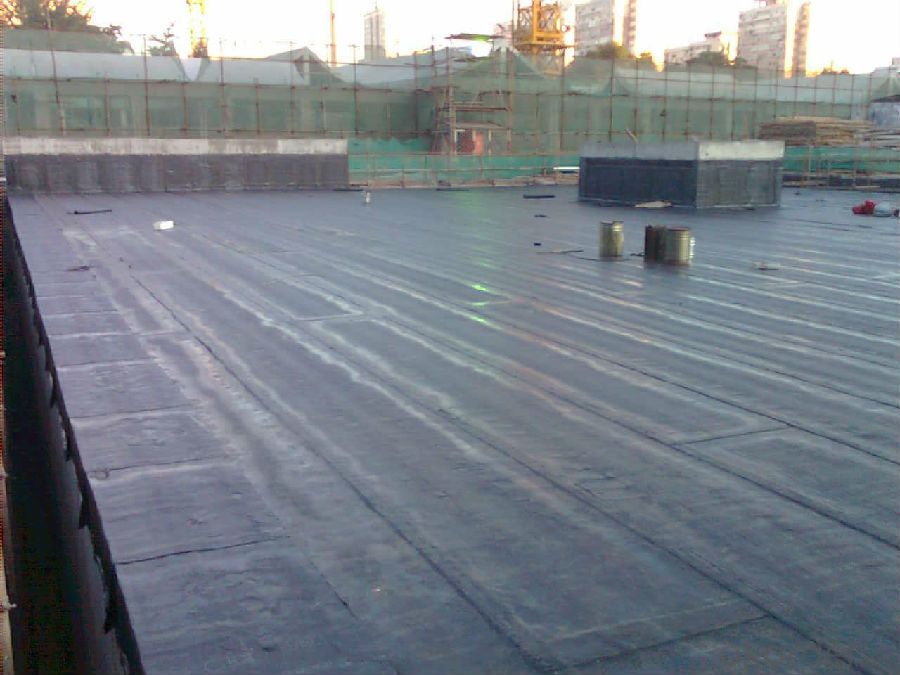
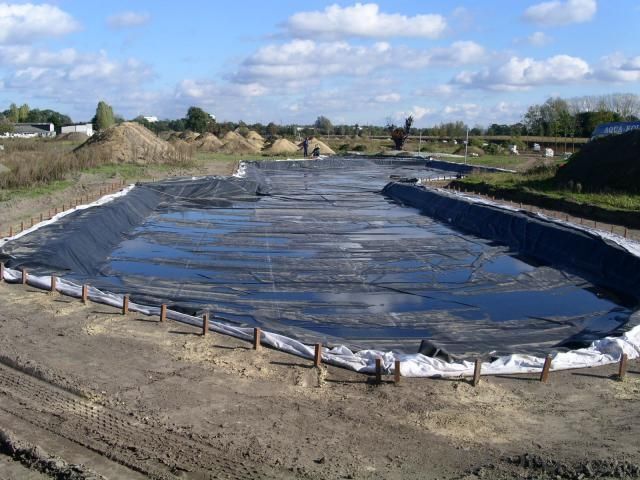
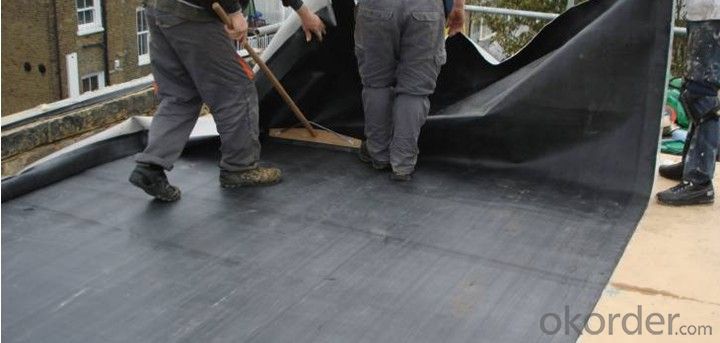
IMages of EPDM Waterproof Roofing Membrane for Green Roof:
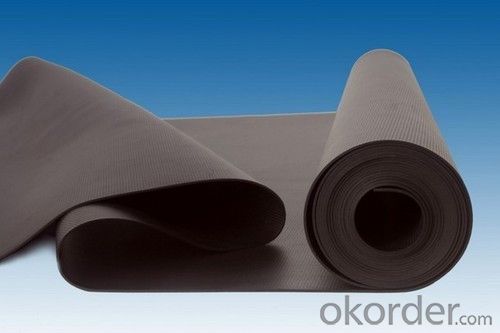
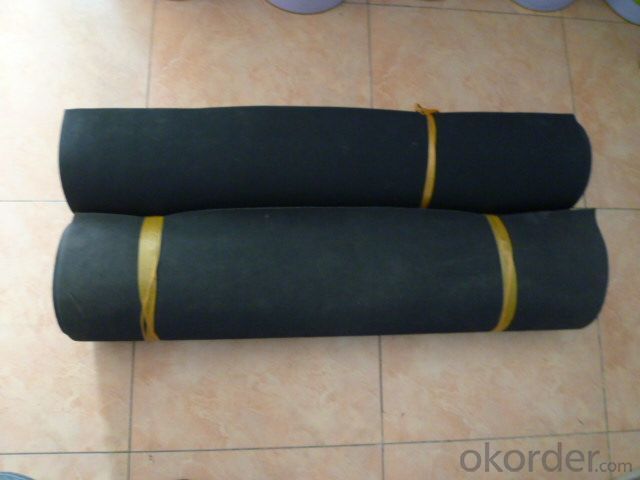
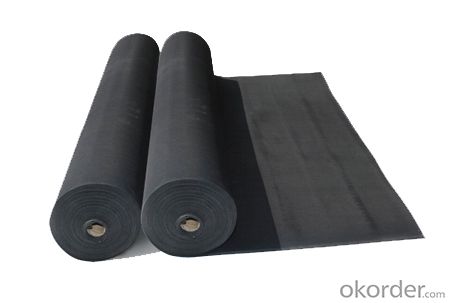
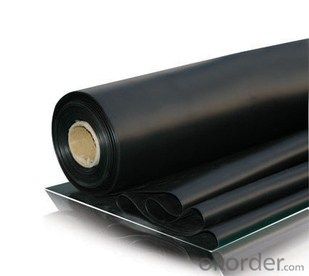
FAQ of EPDM Waterproof Roofing Membrane for Green Roof:
1. What are we supplying?
We are specialized in producing Colorful Asphalt Roof Shingle, SBS/APP modified bitumen waterproof membrane, Self adhesive bitumen waterproof membrane, PVC waterproofing membrane, EPDM rubber roofing membrane, Single Component Polyurethane Waterproof Coating, and Spray Polyurea Waterproof Coating
.
2. How Many years experience do we have?
We have been exported to more than 20 countries in the past 15 years.
3. How long do we usually reply your request?
We always reply our customer within 24 hours.
- Q: Can a waterproofing membrane be painted or covered with other materials?
- Yes, a waterproofing membrane can be painted or covered with other materials, depending on the specific membrane and the intended use. However, it is important to consider the compatibility of the paint or covering material with the waterproofing membrane to ensure proper adhesion and long-term performance. Some waterproofing membranes are specifically designed to be painted or covered with other materials to enhance their appearance or protect them from UV radiation or physical damage. In such cases, manufacturers may provide guidelines and recommendations regarding compatible paints or covering materials that can be used. It is crucial to follow these guidelines and use products that are specifically designed for use with waterproofing membranes. Using incompatible materials may compromise the waterproofing properties of the membrane and lead to leakage or other issues. Additionally, it is important to ensure that any painting or covering process does not damage the waterproofing membrane or compromise its integrity. Proper surface preparation, including cleaning and priming, may be necessary to ensure good adhesion between the membrane and the paint or covering material. In summary, while a waterproofing membrane can be painted or covered with other materials, it is essential to consider compatibility, follow manufacturer guidelines, and ensure proper preparation to maintain the integrity and waterproofing capabilities of the membrane.
- Q: Do waterproofing membranes require maintenance?
- Yes, waterproofing membranes do require maintenance. While they are designed to provide long-lasting protection against water damage, regular maintenance is necessary to ensure their effectiveness. Over time, the membrane may develop cracks, tears, or other forms of damage that can compromise its waterproofing capabilities. Additionally, debris, dirt, and other substances can accumulate on the membrane's surface, obstructing drainage and causing water to pool. Therefore, it is important to inspect the membrane regularly and address any issues promptly. This may involve cleaning the surface, patching or replacing damaged sections, and resealing seams or joints to maintain a watertight barrier. Regular maintenance not only prolongs the lifespan of the waterproofing membrane but also helps prevent costly water damage to the underlying structure.
- Q: Can a waterproofing membrane be used on precast aluminum surfaces?
- Indeed, precast aluminum surfaces can be effectively protected by utilizing a waterproofing membrane. These membranes are specifically engineered to safeguard various surfaces, encompassing concrete, metal, and other materials, against water infiltration. By acting as a formidable barrier, the membrane effectively thwarts the ingress of water into the precast aluminum surface. This proves to be especially advantageous in locales with elevated moisture exposure, such as surrounding swimming pools or outdoor environments. It is crucial to select a waterproofing membrane that is aluminum-compatible in order to guarantee optimal adhesion and long-lasting efficacy.
- Q: Can a waterproofing membrane be used on galvanized surfaces?
- Yes, a waterproofing membrane can be used on galvanized surfaces. Galvanized surfaces are typically used to protect metal from corrosion, and applying a waterproofing membrane can further enhance the protective properties of the galvanized coating. The membrane can provide an additional layer of defense against water penetration, preventing moisture from reaching the galvanized surface and potentially causing rust or other damage. However, it is important to ensure that the waterproofing membrane is compatible with the galvanized surface and is specifically designed for use in such applications. It is also recommended to consult with the manufacturer or a professional to ensure proper installation and compatibility before applying a waterproofing membrane on galvanized surfaces.
- Q: Can a waterproofing membrane be used for both interior and exterior applications?
- Indeed, a waterproofing membrane holds the capability to be utilized for both interior and exterior purposes. The primary purpose of waterproofing membranes revolves around averting the intrusion of water and safeguarding against moisture-induced harm. These membranes are extensively employed in basements, bathrooms, and various indoor areas to obstruct the infiltration of water and the subsequent development of dampness. Moreover, the application of waterproofing membranes on the external surface of edifices offers defense against rain, snow, and other extrinsic factors. By employing a waterproofing membrane for both interior and exterior applications, one can ensure a comprehensive safeguard against water-related destruction, ultimately preserving the structural integrity of their property.
- Q: Can a waterproofing membrane be used on vinyl surfaces?
- Yes, a waterproofing membrane can be used on vinyl surfaces. Vinyl surfaces, such as vinyl flooring or vinyl siding, are commonly found in many residential and commercial buildings. Waterproofing membranes are designed to create a barrier against water and moisture, preventing them from seeping into the underlying materials. These membranes can be applied over vinyl surfaces to provide an additional layer of protection, ensuring that the vinyl remains unaffected by water damage or deterioration. It is important to select a waterproofing membrane that is compatible with vinyl surfaces and follow the manufacturer's instructions for proper application.
- Q: Can waterproofing membranes be installed on uneven surfaces?
- Yes, waterproofing membranes can be installed on uneven surfaces. However, to ensure effective installation, it is important to properly prepare the surface by leveling or smoothing it out as much as possible before applying the membrane.
- Q: Can a waterproofing membrane be used for parking garages?
- Parking garages require the use of a waterproofing membrane. This membrane serves as a protective layer that is applied to surfaces in order to prevent water penetration. Effective waterproofing is necessary in parking garages to safeguard the structure from water damage, such as corrosion of steel reinforcement and deterioration of concrete. Parking garages are exposed to various sources of water, such as rain, snow, and vehicle fluids, which can seep through cracks and joints. By acting as a barrier, a waterproofing membrane prevents water from infiltrating the structure and causing harm. There are different types of waterproofing membranes available for parking garages, including sheet membranes, liquid-applied membranes, and cementitious coatings. These membranes can be used on horizontal and vertical surfaces, such as floors, walls, and ramps, to create a seal that is impervious to water. When selecting a waterproofing membrane for a parking garage, it is important to consider factors such as durability, flexibility, and resistance to chemicals. The membrane should be able to withstand the heavy loads and traffic conditions commonly found in parking garages. In conclusion, the use of a waterproofing membrane in parking garages is essential for protecting the structure and prolonging its lifespan by preventing water-related damage. It helps to maintain the garage's structural integrity and appearance, while also ensuring a safe and functional environment for users.
- Q: Can a waterproofing membrane be used in crawl spaces?
- Yes, a waterproofing membrane can be used in crawl spaces to prevent moisture infiltration and protect the space from water damage.
- Q: Can a waterproofing membrane be applied in wet conditions?
- No, a waterproofing membrane cannot be applied in wet conditions. In order for the membrane to properly adhere to the surface and create an effective barrier against water, the surface must be dry and free from any moisture. Applying a waterproofing membrane in wet conditions can result in poor adhesion, which can compromise its effectiveness and lead to water leakage. It is essential to ensure that the surface is completely dry before applying the membrane to achieve the desired waterproofing results.
Send your message to us
EPDM Waterproof Roofing Membrane for Green Roof
- Loading Port:
- Shanghai
- Payment Terms:
- TT OR LC
- Min Order Qty:
- 20000 m²
- Supply Capability:
- 5000000 m²/month
OKorder Service Pledge
OKorder Financial Service
Similar products
Hot products
Hot Searches
Related keywords
